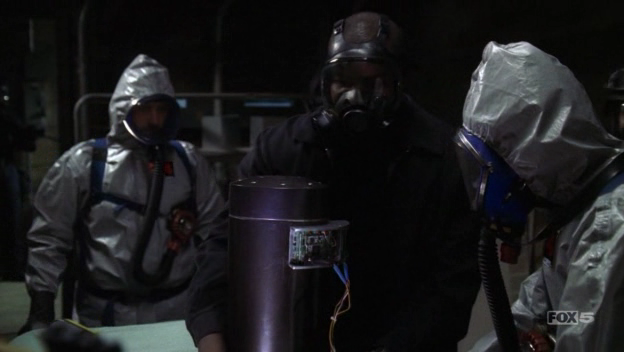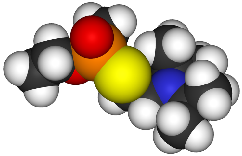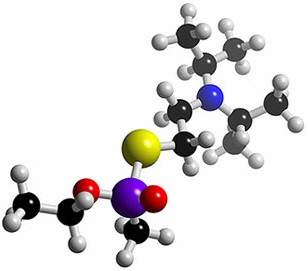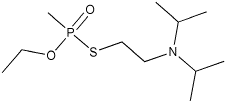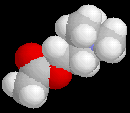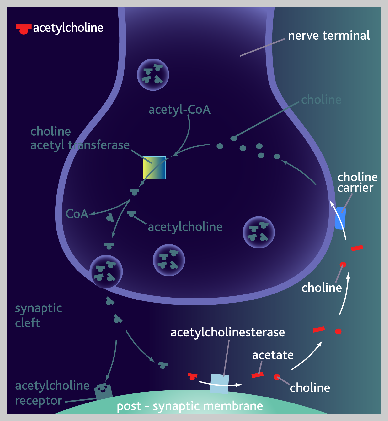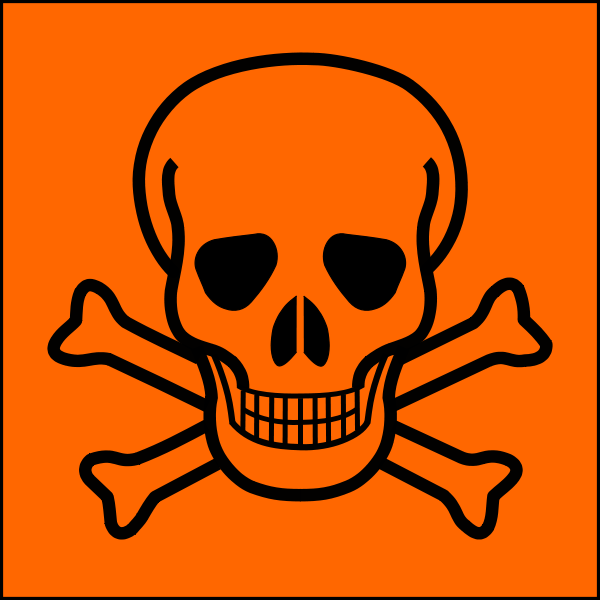A Nerve Gas, Chemical Weapon, Weapon of Mass Destruction
'Regarded
as the deadliest nerve agent created to date'
| Season 5; Episode 13; 7:00-8:00 p.m. |
|
|
|
|
||
|
U.K. CERTIFICATE: 15 |
||
|
RUNTIME: 44 mins |
||
|
SYNOPSIS: Russian separatists utilize a fictional variant of VX called "Sentox VX-1" from a weaponized canister on American soil. |
||
VX (Nerve Agent)
History: Developed in the Porton Down Chemical Weapons Research Centre, Wiltshire, England in 1952. Britain traded this deadly VX technology with America for information on thermonuclear weapons. Properties: With its high viscosity and low volatility, it is normally in its liquid state despite its name, and has the texture and feel of high-grade motor oil. This makes it especially dangerous, as it has a high persistence in the environment. It is odourless, tasteless and is an excellent adhesive, which can be distributed as a liquid or, through evaporation, into small amounts of vapour. |
Click on the picture above
to interact Chemical Formula: CH3CH2O-P(O)(CH3)-SCH2CH2N(C3H7)2
Chemical
Name: O-ethyl S-(2-diisopropylaminoethyl) methylphosphonothioate |
Mode of Action
| Mason: What exactly does this stuff do? |
|
VX works as a nerve agent by inhibiting the function of the enzyme acetylcholinesterase. Normally, an electric nerve impulse would result in the release of acetylcholine over a synapse, stimulating a muscle contraction. The enzyme subsequently hydrolyses (breaks down) acetylcholine into acetic acid and choline (non-reactive substances). If more muscle tension is required then the nerve must release more acetylcholine. Click on the picture above
to interact |
|
|
Click
on the image to view the the protein structure ( The mechanism of action of acetylcholinesterase |
|
|
|
|
Death: Nerve gases generally cause death by asphyxiation. The symptoms preceding this include:
After the victim has lost control of their bodily functions, they will lapse into a coma and suffocate to death as a result of convulsive spasms. Antidote: Atropine, although a toxin itself this anti-nerve agent counteracts the deadly effects of VX by removing it from the enzyme. It is normally administered by injecting intravenously into the arm or thigh, however for gaseous attacks atropine must go immediately into the heart. |
Click on the picture above
to interact |
